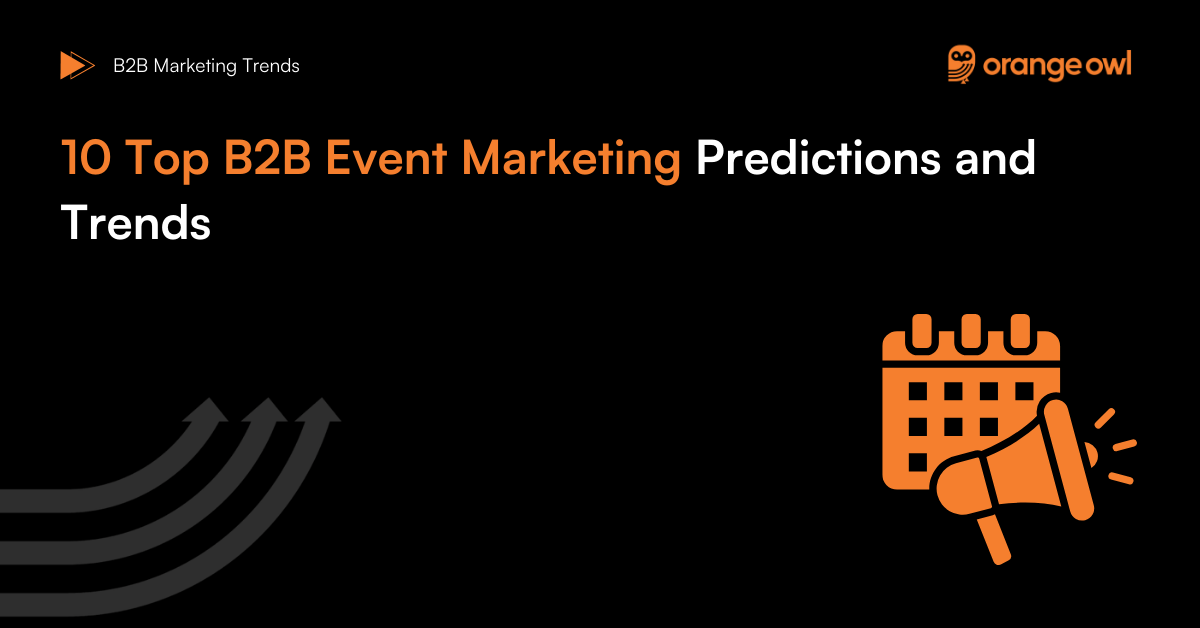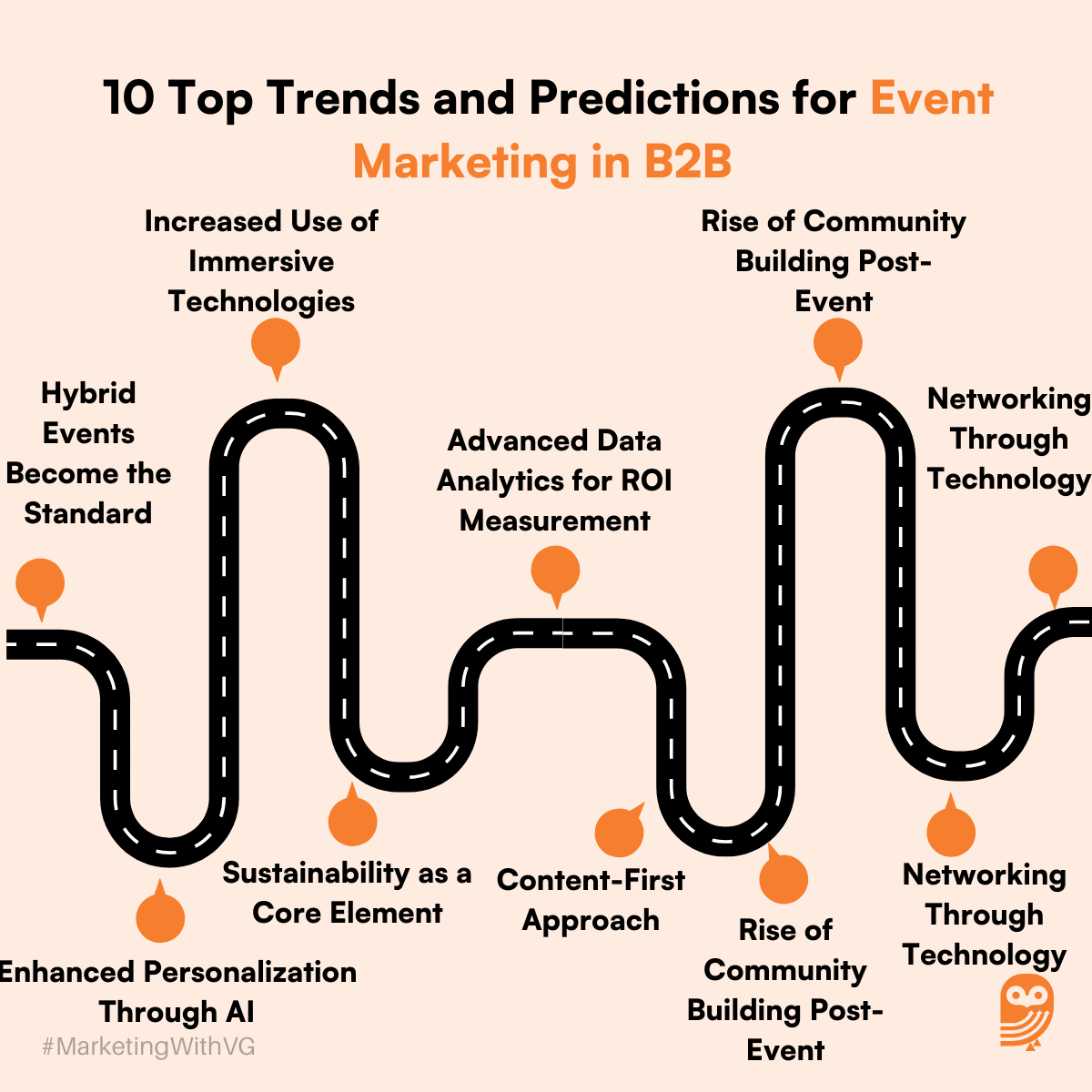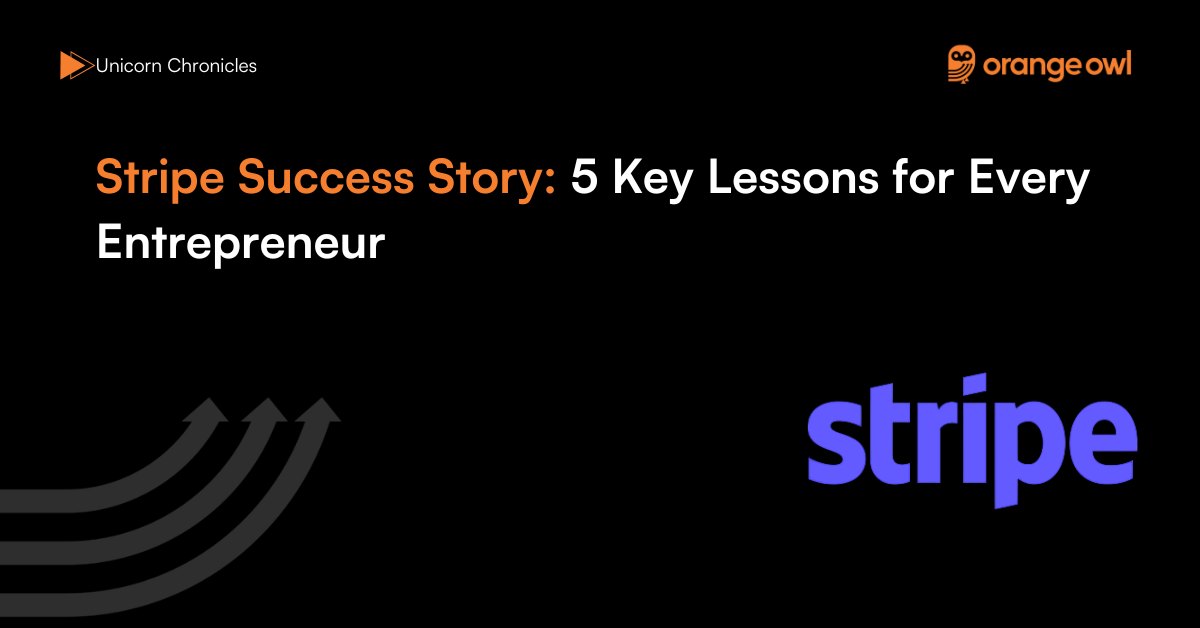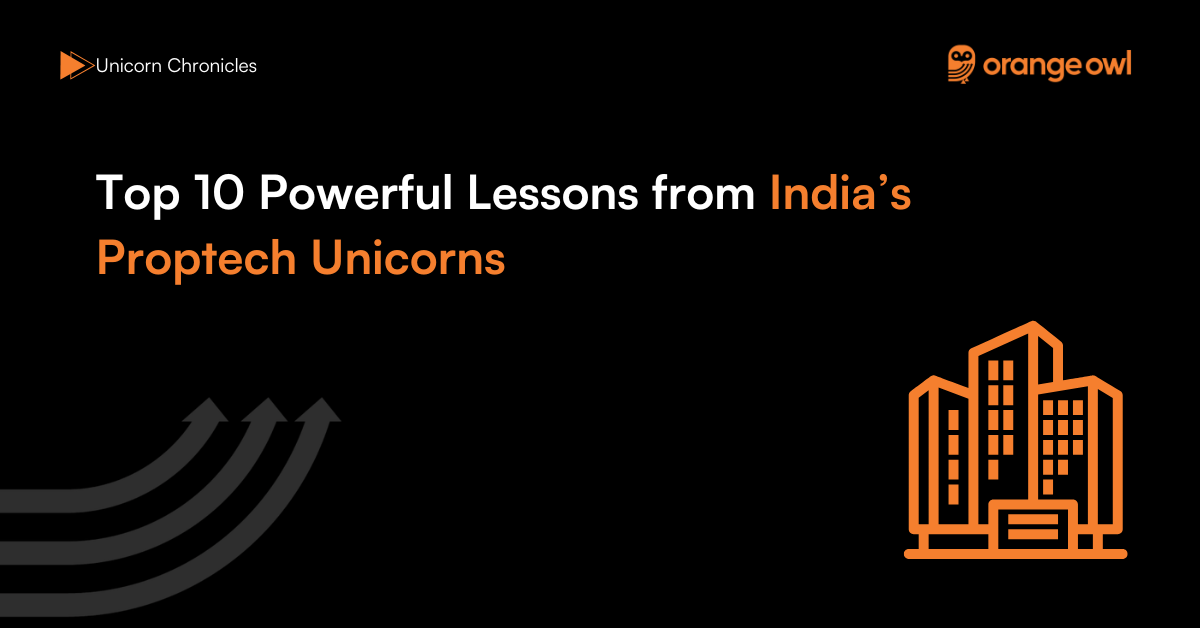Unlock Top 10 B2B Event Marketing Predictions and Trends for 2025
Vivek Goel
June 16, 2025

Table of Contents
Introduction
As we move closer to 2025, the role of event marketing in B2B sectors continues to evolve, integrating new technologies and strategies to enhance engagement and ROI. Given the rapid developments in digital and hybrid event technologies post-pandemic, understanding the future landscape is crucial for B2B marketers. This blog delves into the top B2B event marketing predictions and trends in 2025, offering actionable insights and strategic guidance to leverage these trends effectively.
10 B2B Event Marketing Predictions and Trends
Prediction 1: Hybrid Events Become the Standard
Insight: Hybrid events that combine physical and digital elements will become the norm, offering flexibility and broader reach.
Actionable Steps:
- Invest in technology that facilitates a seamless experience between in-person and virtual attendees.
- Design events with elements that cater specifically to both audiences to maximize engagement and participation.
Example: A B2B tech conference could feature live keynotes for in-person attendees with virtual VR booths for remote attendees to interact with product demos.
Prediction 2: Enhanced Personalization Through AI
Insight: AI will drive personalisation to enhance the attendee experience, delivering content and interactions tailored to individual preferences and professional needs.
Actionable Steps:
- Use AI to analyze attendee data and personalize event schedules, content, and networking opportunities.
- Implement AI chatbots to provide real-time assistance and personalized recommendations during events.
Example: A B2B healthcare summit might use AI to suggest personalized agendas for attendees based on their specialities, interests, and previous interactions.

Prediction 3: Sustainability as a Core Element
Insight: Sustainability will become a critical consideration in event planning, with companies expected to demonstrate environmental responsibility.
Actionable Steps:
- Choose venues and suppliers that prioritize sustainability.
- Reduce waste by opting for digital materials and eco-friendly event swag.
Example: A B2B sustainability conference could eliminate physical handouts, opting for digital resources and apps that attendees can access on their devices.
Prediction 4: Advanced Data Analytics for ROI Measurement
Insight: Data-driven insights will be crucial for measuring event success and ROI, with advanced analytics tools being used to track deeper engagement metrics.
Actionable Steps:
- Implement tools to capture and analyze attendee behaviour, session attendance, and engagement levels.
- Use this data to refine event strategies and prove ROI to stakeholders.
Example: A B2B marketing event could track engagement through heatmaps and session analytics to understand which topics resonated most with attendees.
Prediction 5: Increased Use of Immersive Technologies
Insight: Technologies like VR and AR will be increasingly used to create immersive and engaging event experiences.
Actionable Steps:
- Incorporate VR to allow remote attendees to experience the event as if they were there.
- Use AR for interactive displays and presentations to engage attendees.
Example: A B2B product launch might use AR to allow attendees to see and interact with 3D models of the product.
Prediction 6: Content-First Approach
Insight: Content will remain king, with a focus on delivering valuable, high-quality content that attendees can’t get elsewhere.
Actionable Steps:
- Prioritize content development by involving thought leaders and industry experts.
- Ensure content is actionable and provides real value to attendees’ professional lives.
Example: A B2B finance seminar could offer exclusive insights into emerging markets or regulatory changes provided by leading experts.
Prediction 7: Rise of Community Building Post-Event
Insight: Building communities around events will become more important, with efforts to maintain engagement and dialogue after the event concludes.
Actionable Steps:
- Create online forums or groups where attendees can continue discussions and networking.
- Schedule follow-up webinars or meetups to sustain the community.
Example: A B2B trade show organizer could establish a year-round online community where vendors and buyers can connect, share news, and update each other on industry trends.
Prediction 8: Greater Focus on Security and Safety
Insight: As in-person events return, the emphasis on health and security will continue to be paramount.
Actionable Steps:
- Implement robust security measures and transparent health safety protocols.
- Offer peace of mind to attendees through clear communication about safety measures.
Example: A large B2B expo could use facial recognition for secure, contactless entry and real-time crowd monitoring to manage social distancing.
Prediction 9: Networking Through Technology
Insight: Networking will be facilitated by technology, making it easier for attendees to connect with the right people.
Actionable Steps:
- Use mobile apps that allow attendees to schedule meetings and find networking opportunities based on mutual interests.
- Provide tools that help attendees filter contacts by industry, job role, or interest.
Example: A B2B legal conference could offer an app that matches attendees for networking based on their areas of specialization and interest in certain sessions.
Prediction 10: Inclusion and Accessibility
Insight: Events will prioritize inclusivity and accessibility, ensuring all potential attendees can participate fully, regardless of physical or digital barriers.
Actionable Steps:
- Design events to be accessible by people with disabilities, including considerations for both physical venues and digital platforms.
- Offer materials in multiple formats and provide interpretation services as needed.
Example: An international B2B forum could provide real-time translation services and ensure all videos have subtitles.
Conclusion
The future of B2B event marketing in 2025 promises richer, more engaging, and more effective events that leverage technology and data to meet the evolving needs of attendees and organizers alike. By anticipating these trends and integrating them into your event strategies, you can create impactful experiences that resonate with your audience and deliver measurable business results.
Check out the List of Top B2B Conferences and Events in India
Frequently Asked Questions (FAQs) on B2B Event Marketing Predictions and Trends
Hybrid events combine in-person and virtual elements, allowing businesses to cater to a broader audience. They enable flexibility for participants who may not be able to attend physically, thus increasing attendance and engagement. Additionally, hybrid events offer opportunities for cost savings, as businesses can optimize resources by scaling virtual participation. For B2B marketers, hybrid formats also provide extensive data collection opportunities through digital tools, helping to analyze attendee preferences and behaviors.
AI-driven tools can significantly improve networking by matching attendees with similar interests, job roles, or business goals. AI-powered apps can suggest potential connections, schedule meetings, and even analyze attendee profiles to provide personalized recommendations. For instance, AI chatbots can facilitate introductions by suggesting icebreakers or discussion topics. These tools help attendees make meaningful connections, saving time and ensuring they meet the most relevant individuals at the event.
Sustainability is now a critical factor for businesses due to increased environmental awareness and corporate social responsibility. Stakeholders, including attendees, expect businesses to adopt eco-friendly practices in event management. Sustainable events reduce waste, save costs, and enhance brand reputation. Organizers can incorporate practices such as going paperless, using biodegradable materials, and selecting venues that follow green initiatives. A sustainable event not only aligns with environmental values but also attracts like-minded participants who prioritize ethical business practices.
To evaluate the success of a B2B event, organizers should focus on several key metrics:
- Attendee Engagement: Track session attendance, Q&A participation, and interaction with event content.
- Lead Generation: Monitor the number of qualified leads generated through the event.
- Social Media Metrics: Assess the reach and impact of the event through hashtags, shares, and mentions.
- Feedback Surveys: Use post-event surveys to understand attendee satisfaction and areas for improvement.
- Revenue Metrics: Analyze ticket sales, sponsorship revenue, and post-event sales influenced by the event.
These insights help refine future strategies and demonstrate ROI to stakeholders.
Immersive technologies such as VR and AR transform traditional events into interactive experiences. VR allows remote participants to virtually “attend” events, offering 360-degree views of presentations or exhibits. AR, on the other hand, overlays digital elements onto the real world, making product demonstrations or presentations more engaging. For example, an AR app can let attendees visualize a product’s features in real-time. These technologies foster deeper engagement and ensure attendees retain more information, making events memorable and impactful.
To maintain momentum post-event, organizers should focus on community-building and content sharing. Strategies include:
- Creating Online Communities: Platforms like LinkedIn groups or Slack channels can serve as spaces for continued discussions and networking.
- Hosting Follow-Up Events: Webinars or meetups can provide additional value and keep attendees connected.
- Sharing Exclusive Content: Providing event recordings, insights, and reports helps attendees revisit key topics and share them with their networks.
This ongoing engagement nurtures relationships, reinforces brand presence, and converts attendees into long-term partners or customers.
Small businesses can adopt advanced technologies without breaking the bank by prioritizing affordable and scalable solutions. For instance, they can use virtual event platforms like Hopin or Zoom to host hybrid or virtual events. Additionally, small businesses can collaborate with tech vendors to access VR or AR tools on a project basis. By focusing on the needs of their target audience and selecting cost-effective solutions, small businesses can create impactful events that rival those of larger competitors.
An inclusive B2B event ensures that all participants, regardless of physical abilities or digital access, can fully engage. Key elements include:
- Physical Accessibility: Provide wheelchair access, elevators, and clear signage at venues.
- Digital Accessibility: Ensure virtual platforms are user-friendly, with options for screen readers and closed captions.
- Language Support: Offer translation services and multilingual materials.
Inclusive events demonstrate respect for diversity and encourage participation from a wide range of attendees, reflecting positively on the event organizer’s values.
In a post-pandemic world, balancing safety and attendee comfort is crucial. Organizers can implement measures such as contactless check-ins, real-time crowd monitoring, and thorough sanitation protocols. Clear communication is essential to ensure attendees understand and feel reassured by these measures. For instance, sharing updates about safety protocols in pre-event communications builds trust. Combining robust safety measures with a welcoming environment ensures a secure yet enjoyable experience for participants.
Content is the backbone of any B2B event, as it delivers the value attendees seek. High-quality content attracts participants, fosters engagement, and positions the organizer as an industry leader. Thought-provoking sessions, expert speakers, and actionable insights ensure attendees leave with knowledge they can apply to their professional challenges. For example, a well-curated panel discussion on emerging trends provides unique perspectives that attendees can’t find elsewhere. Focusing on content quality ensures long-term attendee satisfaction and retention.


